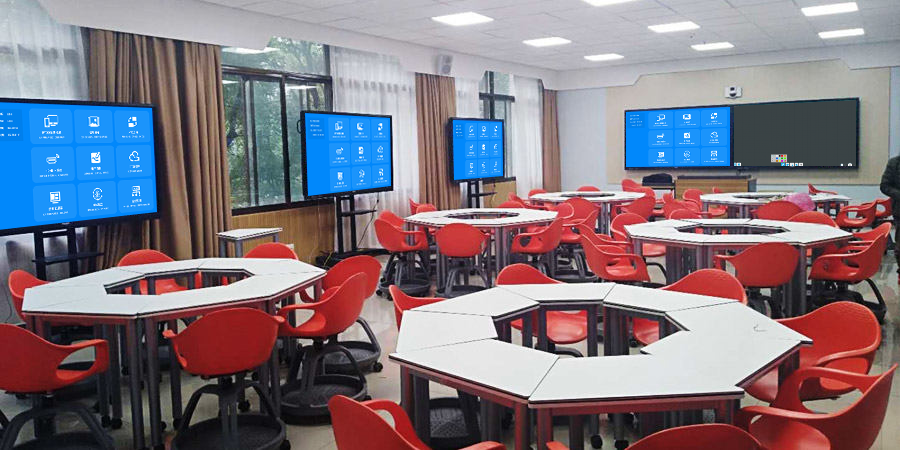Guide to Smart Classroom Construction: Technical Integration Strategies for Wireless Screen Mirroring and Group Discussions
Building a truly smart classroom requires in-depth integration of advanced technologies with teaching concepts. As a core support, wireless screen mirroring technology demands scientific planning and professional implementation.
1. Infrastructure Planning
Network Environment Requirements
- High-speed and stable WiFi coverage: Ensure seamless signal in all corners of the classroom, including group discussion areas.
- Rational network zoning design: Separate teaching equipment networks from student device networks to avoid mutual interference.
- Sufficient bandwidth guarantee: Allocate enough bandwidth to support simultaneous screen mirroring from multiple devices (minimum 50Mbps dedicated bandwidth recommended).
Display Device Layout
- Main display configuration: Equip with large-size (≥86 inches) 4K interactive displays supporting multi-touch and annotation functions.
- Group display planning: Deploy 3-5 small displays (43-55 inches) in group discussion zones, each connected to an independent screen mirroring module.
- Sightline and viewing angle optimization: Install displays at a height of 1.2-1.5 meters from the ground, with a viewing angle coverage of over 178° to ensure clear visibility for all students.
2. Screen Mirroring Technology Selection
Protocol Support Strategy
- Mandatory Miracast protocol support: Ensure compatibility with mainstream Windows and Android devices used by most students and teachers.
- AirPlay protocol configuration on demand: Deploy based on the number of Apple devices in the school (recommended for schools with high Apple device adoption).
- Consider future technology evolution: Select devices supporting upgradable firmware to adapt to emerging protocols and standards.
Device Compatibility Testing
- Teacher equipment compatibility guarantee: Pre-test with commonly used teacher devices (laptops, tablets) to ensure one-click connection.
- Student device support range: Verify compatibility with mainstream brands/models of student smartphones and tablets through sampling tests.
- Guest device connection solutions: Provide temporary connection methods (e.g., QR code authorization) for visiting teachers or external devices.
3. Teaching Model Innovation
Interactive Teaching Applications
- Multiple screen layout modes: Support split-screen, picture-in-picture, and full-screen switching to adapt to different teaching links.
- Quick switching management: Enable teachers to switch between teaching content and student sharing with one key or voice commands.
- Interactive teaching function implementation: Integrate screen annotation, real-time voting, and question submission with screen mirroring.
Group Discussion Design
- Group task distribution mechanism: Teachers can push different tasks to each group’s display through the management system.
- Result presentation and communication solutions: Support one-click switching of group displays to the main screen or simultaneous display of multiple group results.
- Innovation in teaching process evaluation: Record group discussion processes through screen mirroring and generate participation and contribution analysis reports.
Key to Success: Smart classroom construction requires systematic integration of technology, space, and teaching methods, with wireless screen mirroring technology serving as an important support to achieve this goal.
